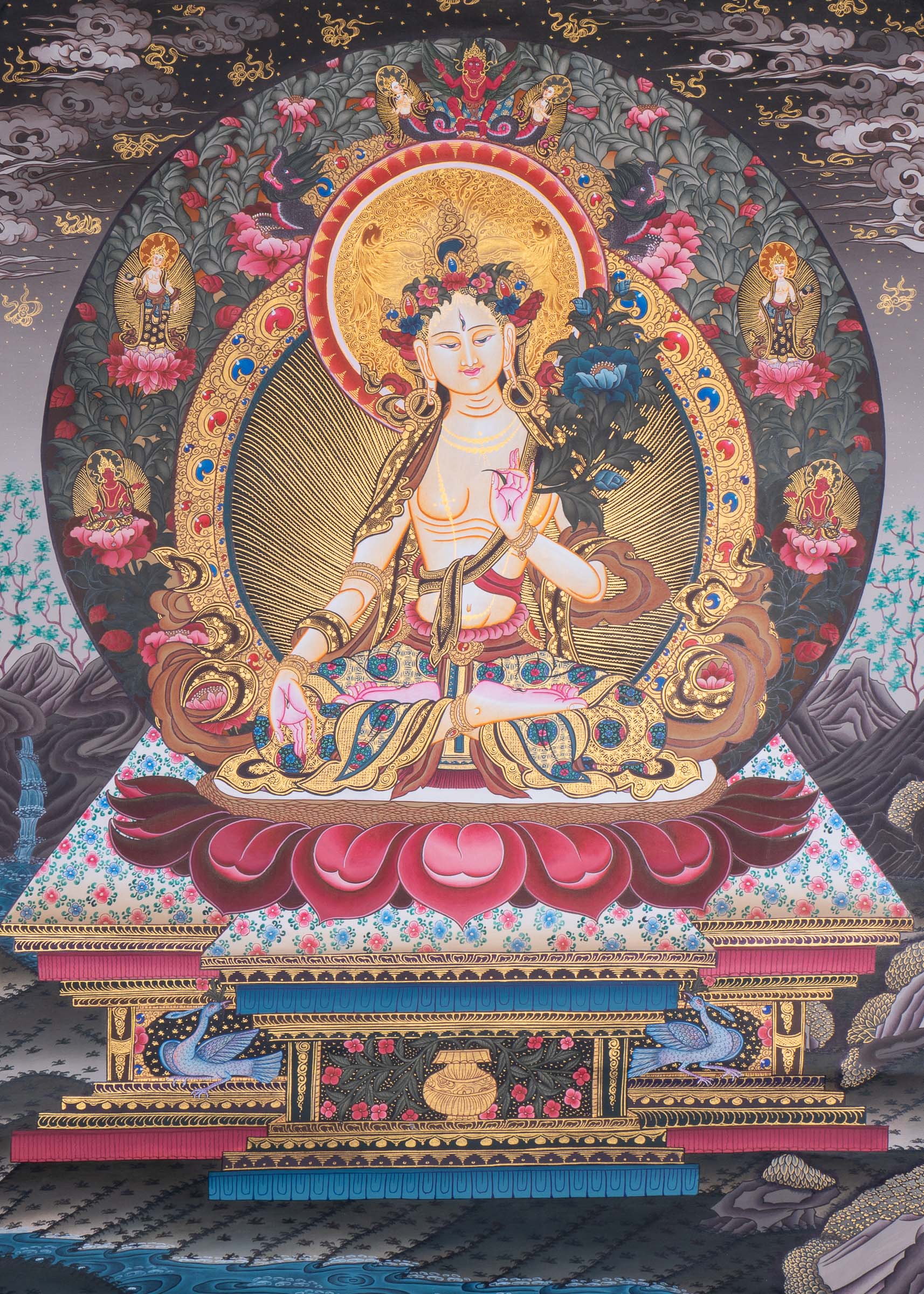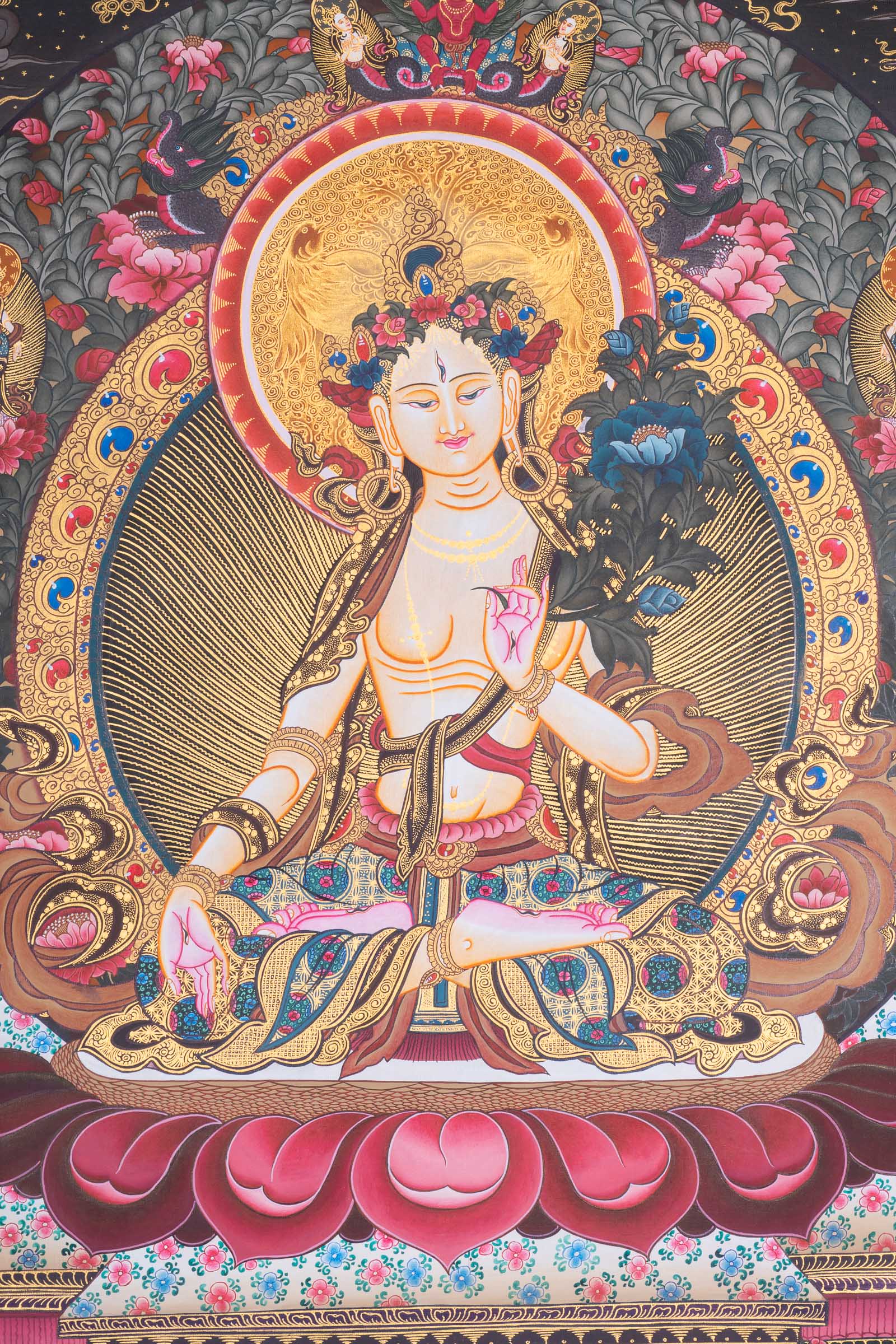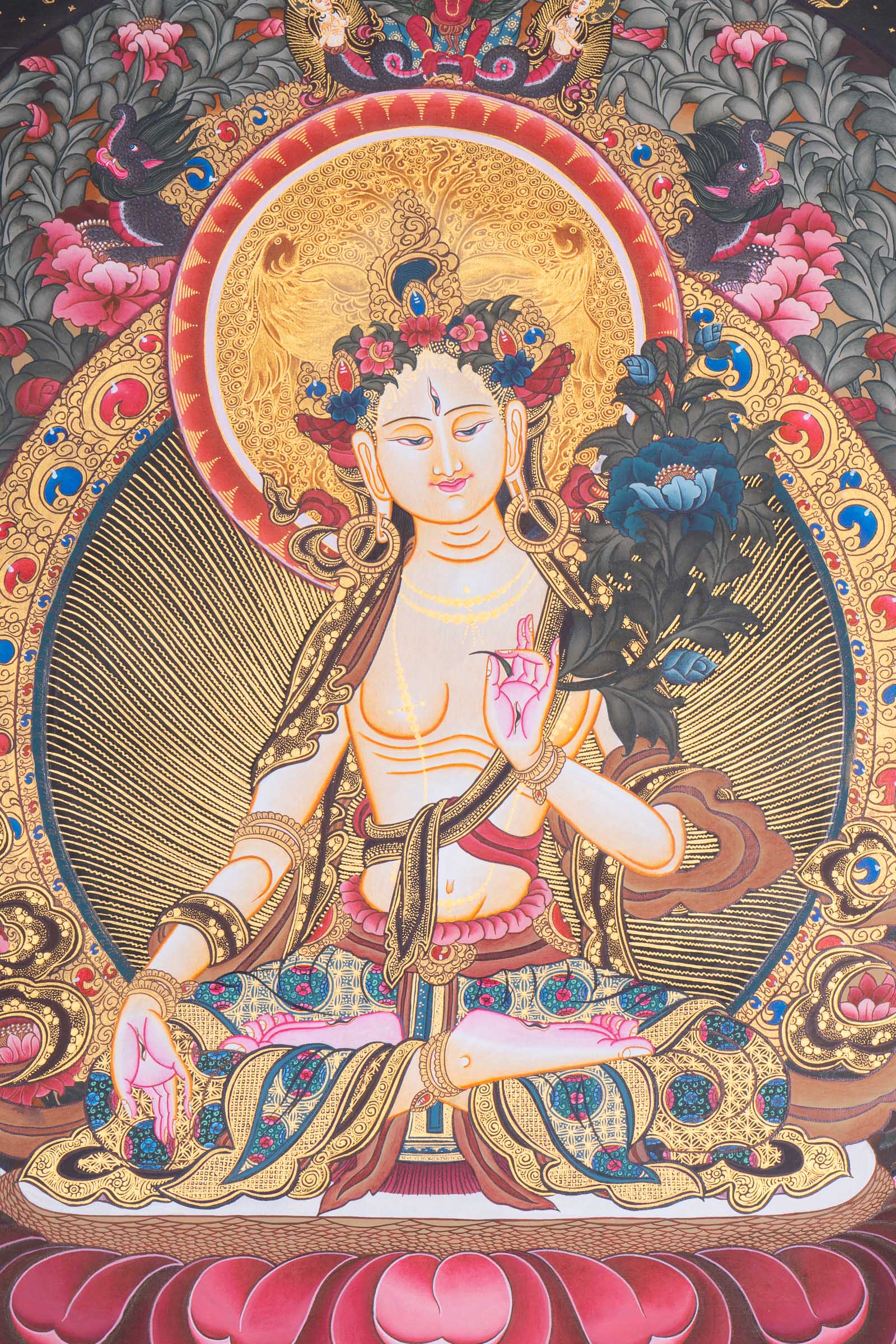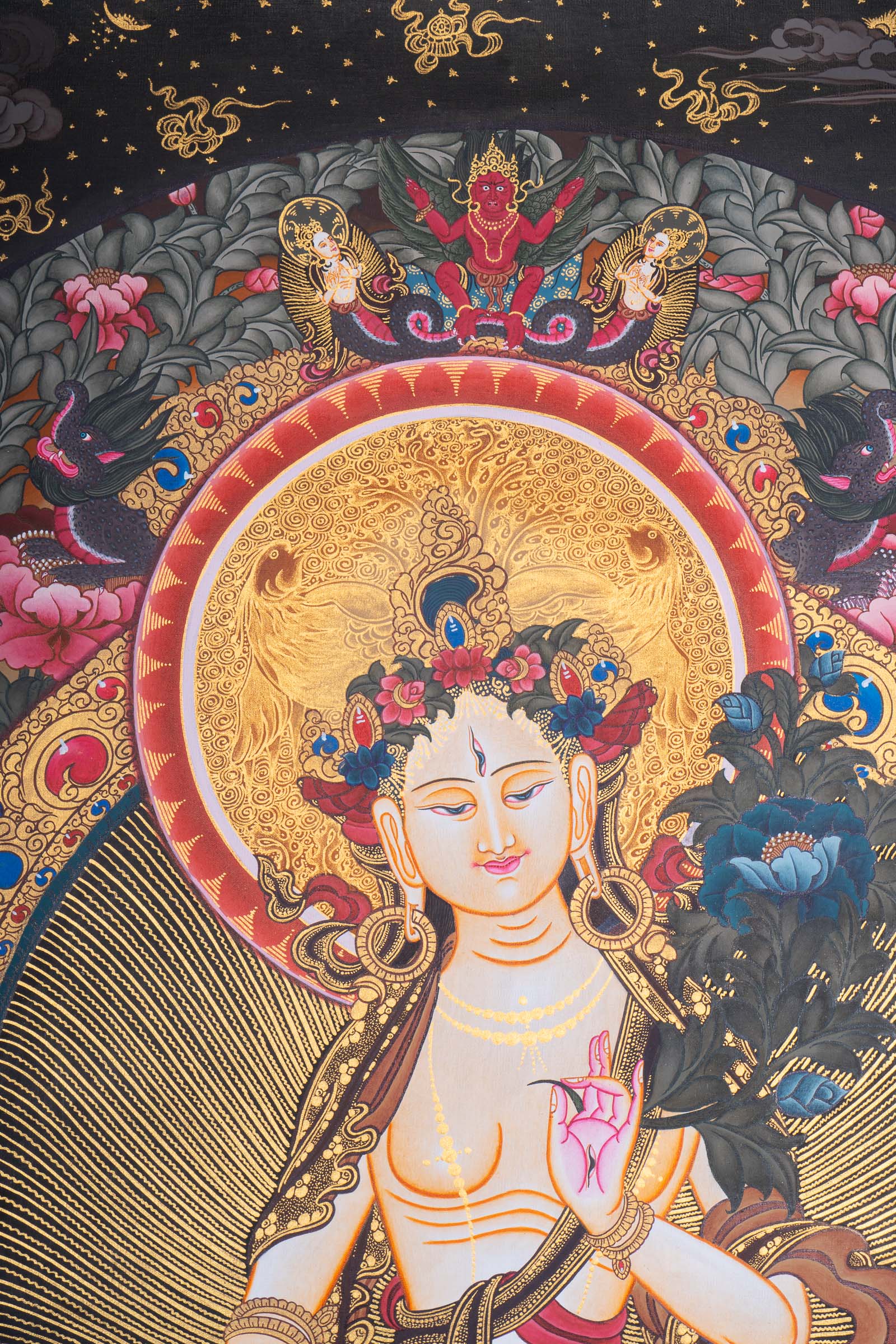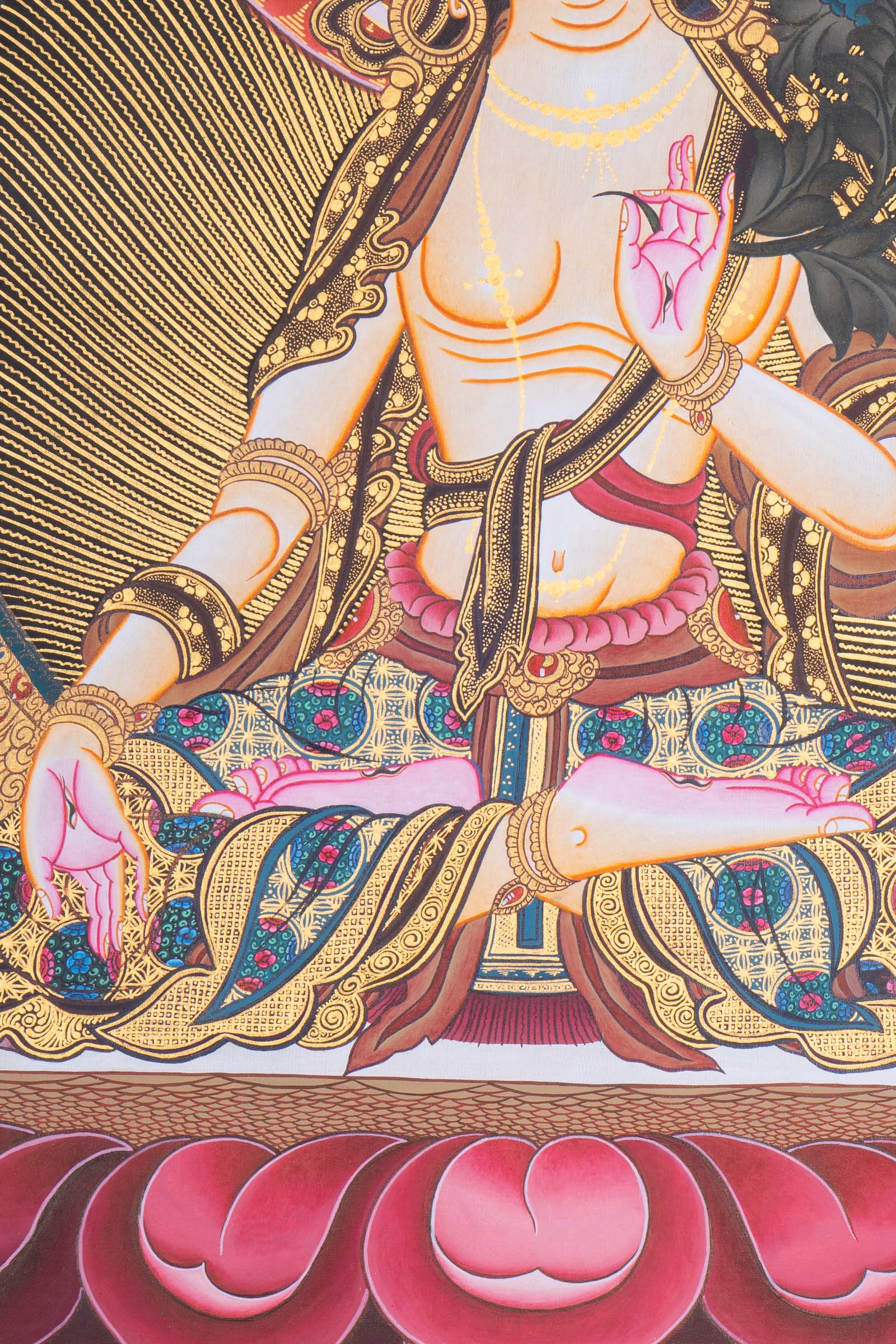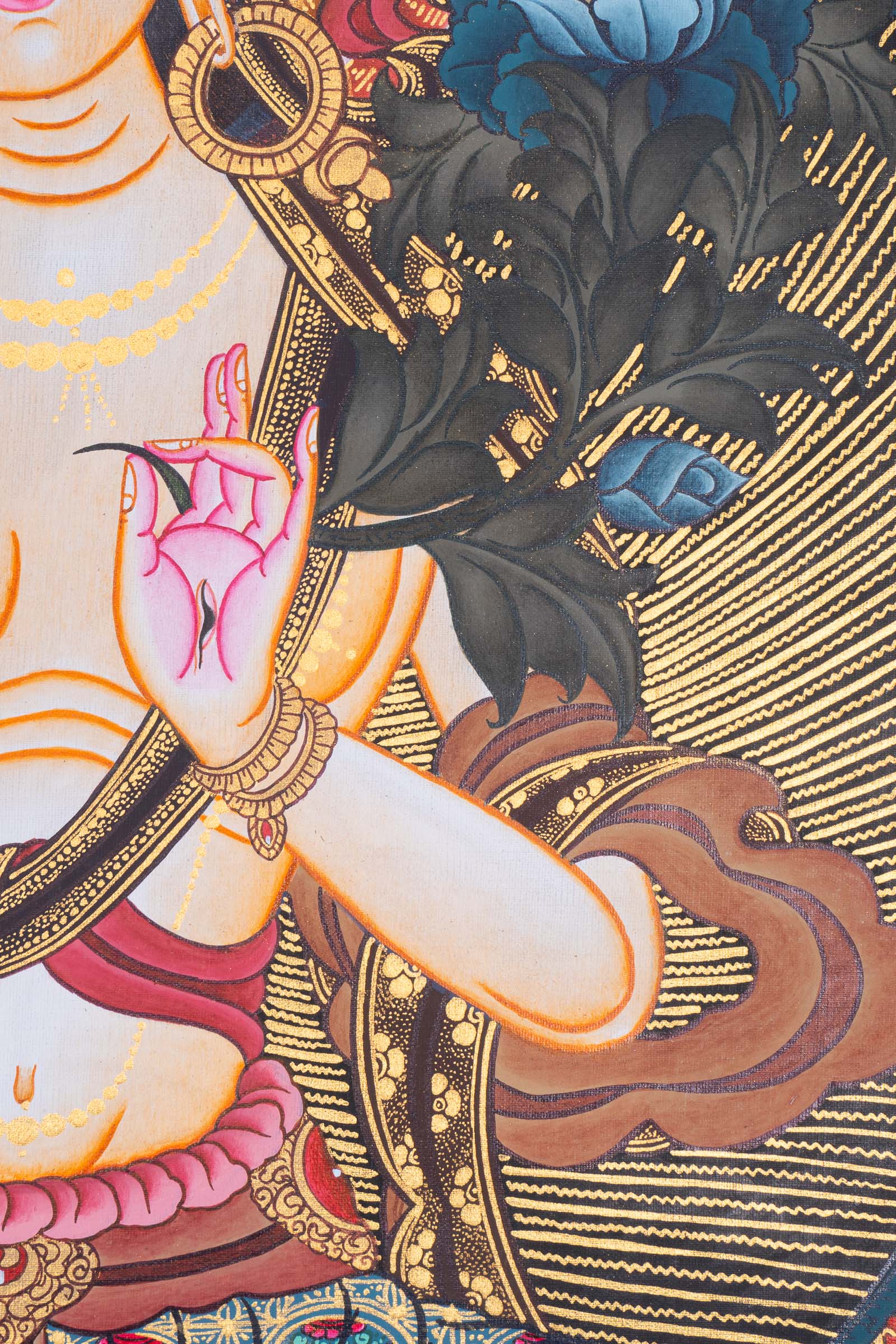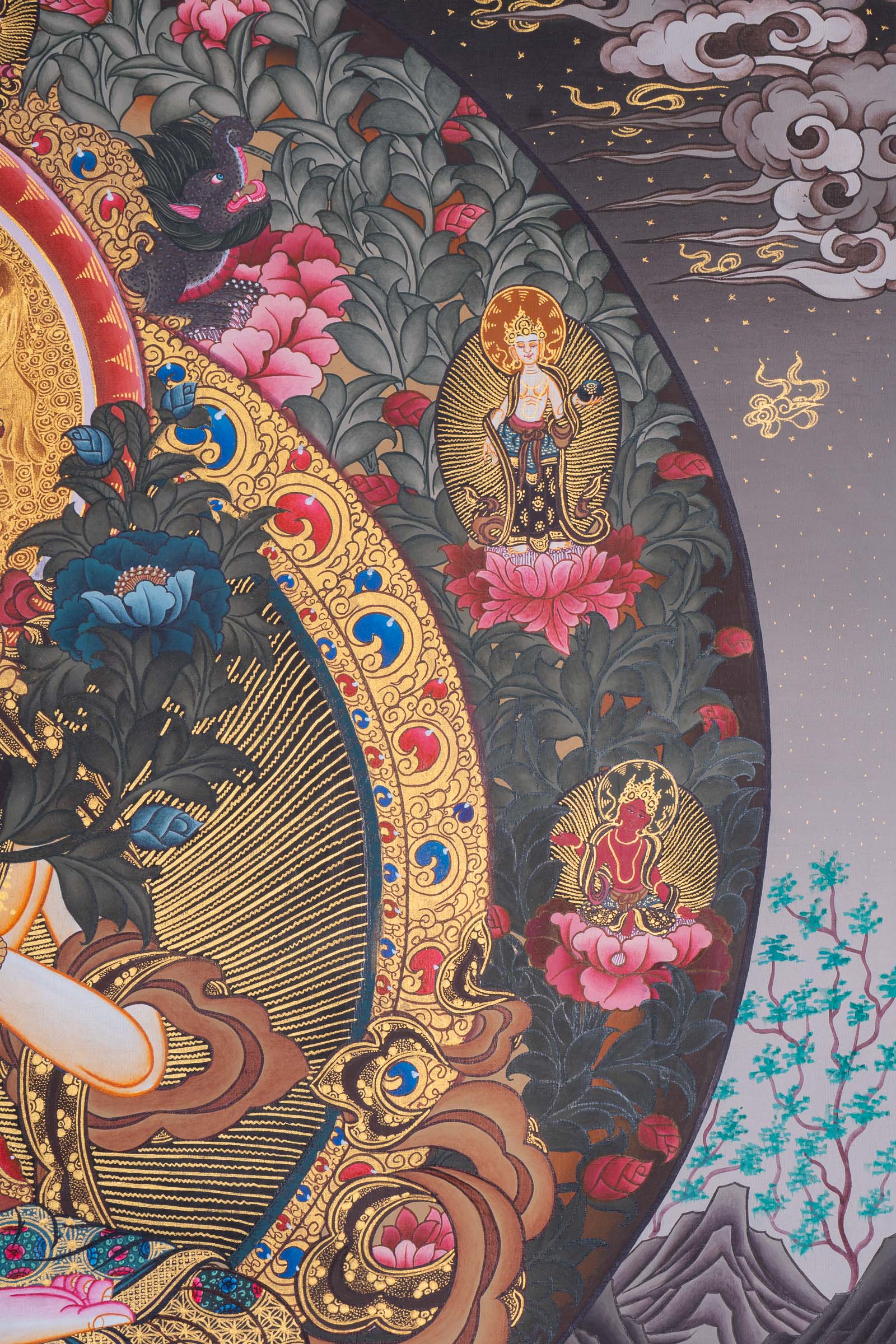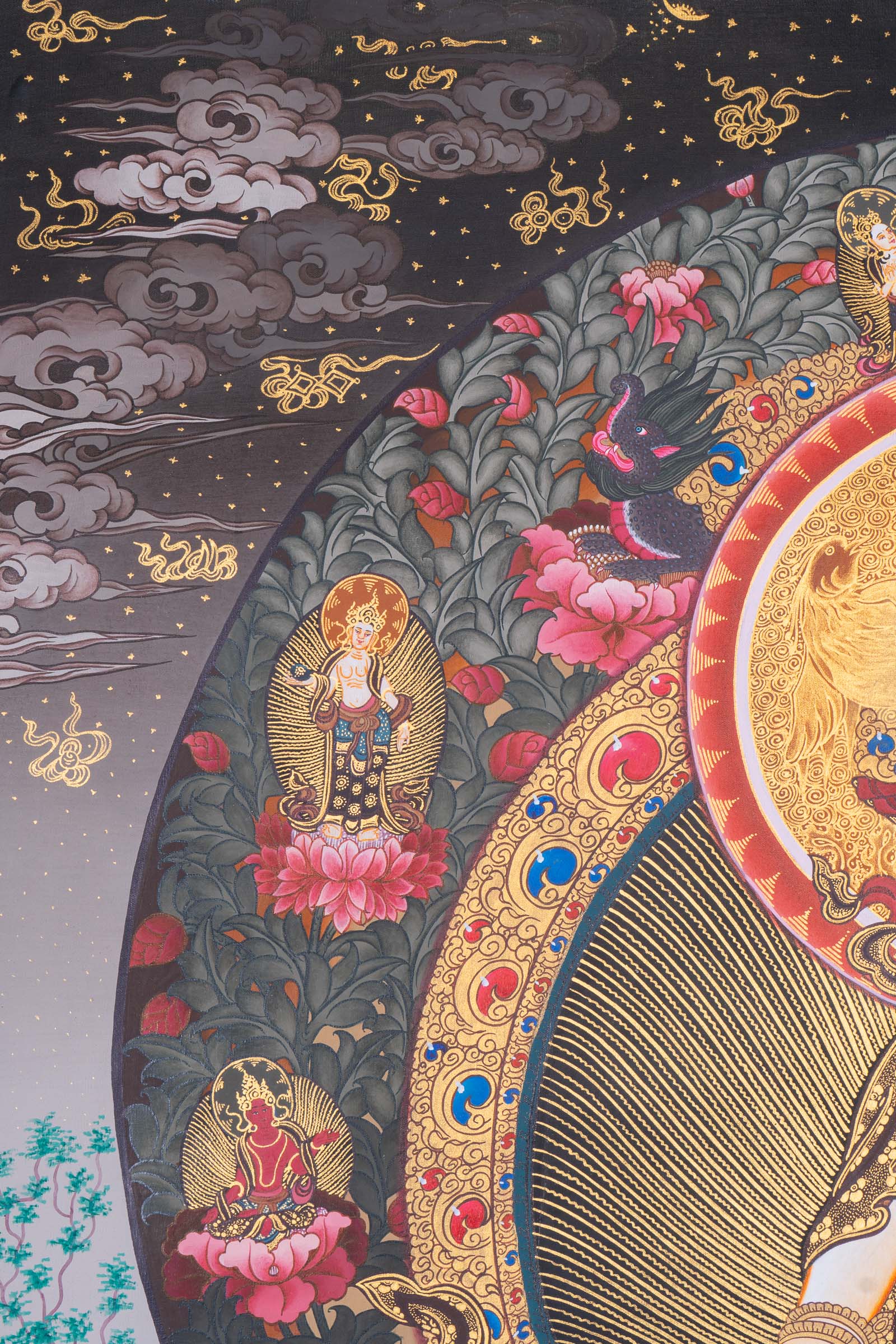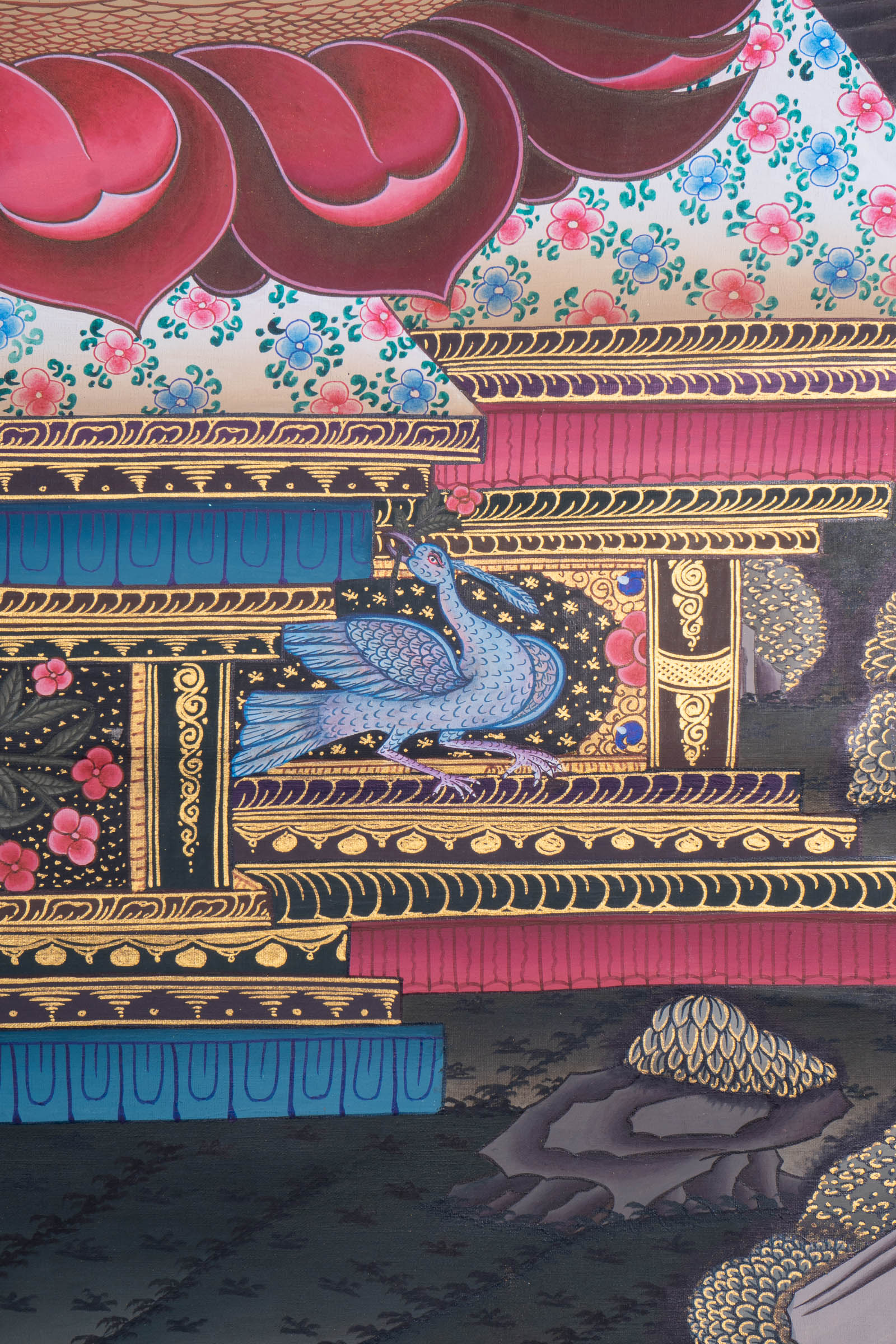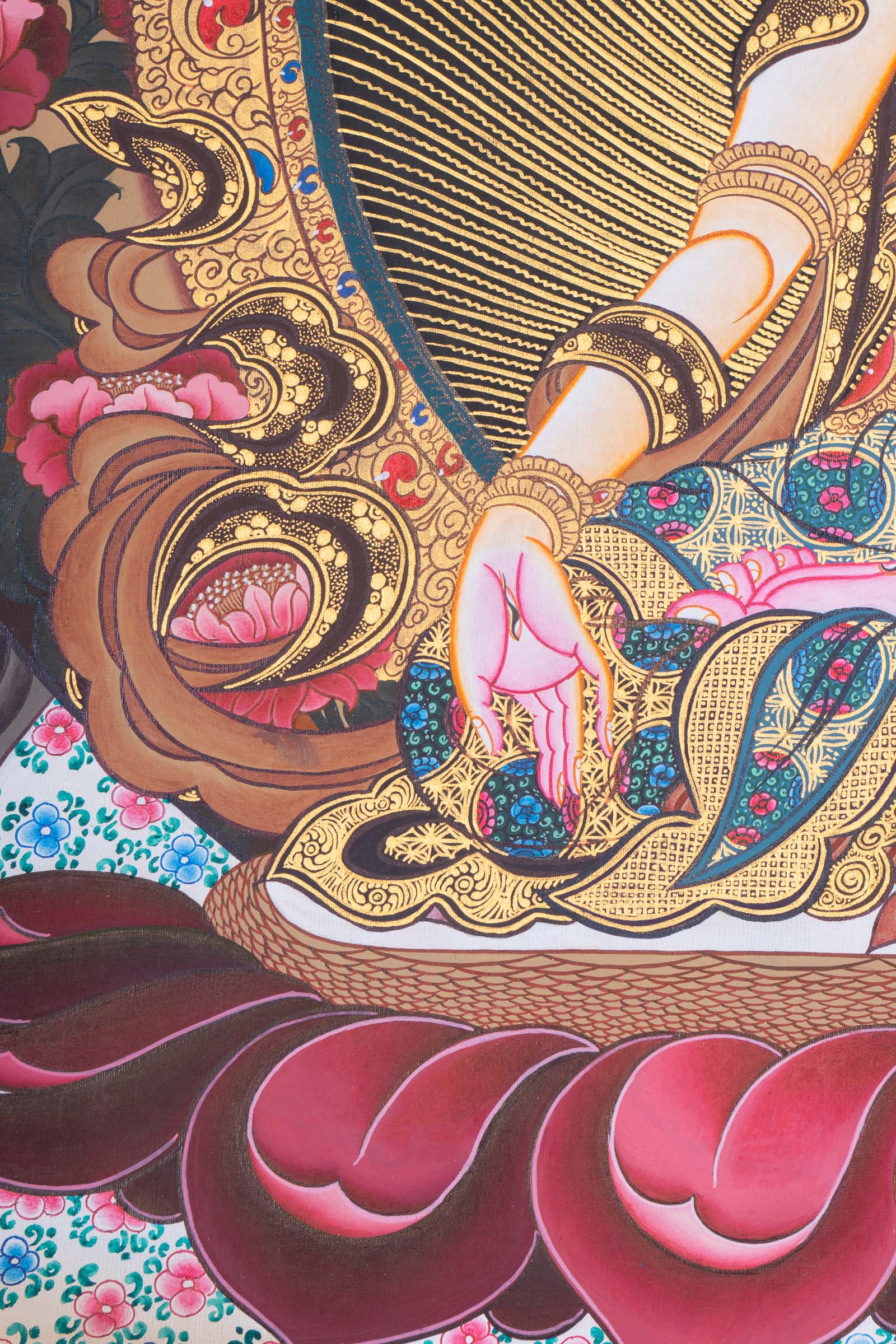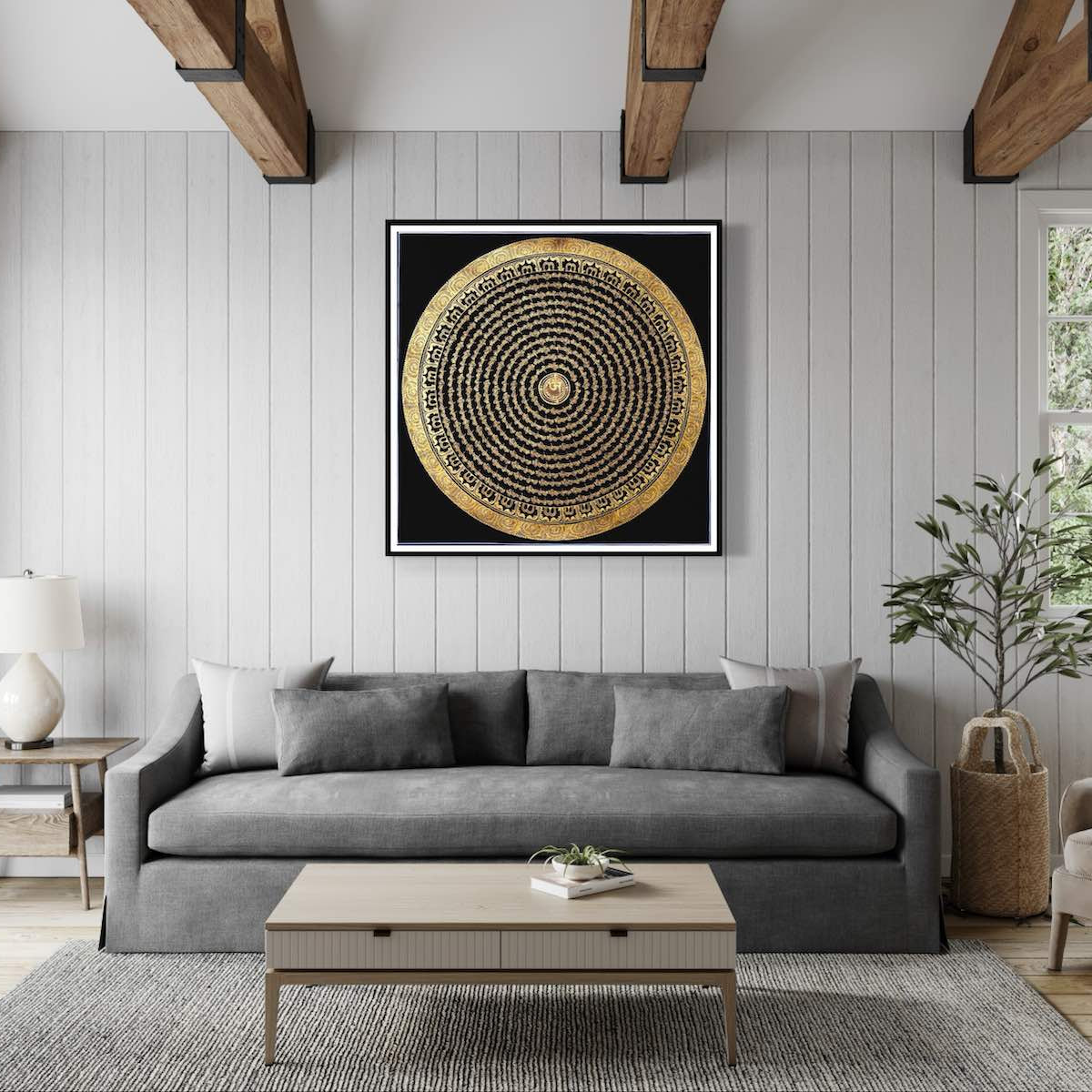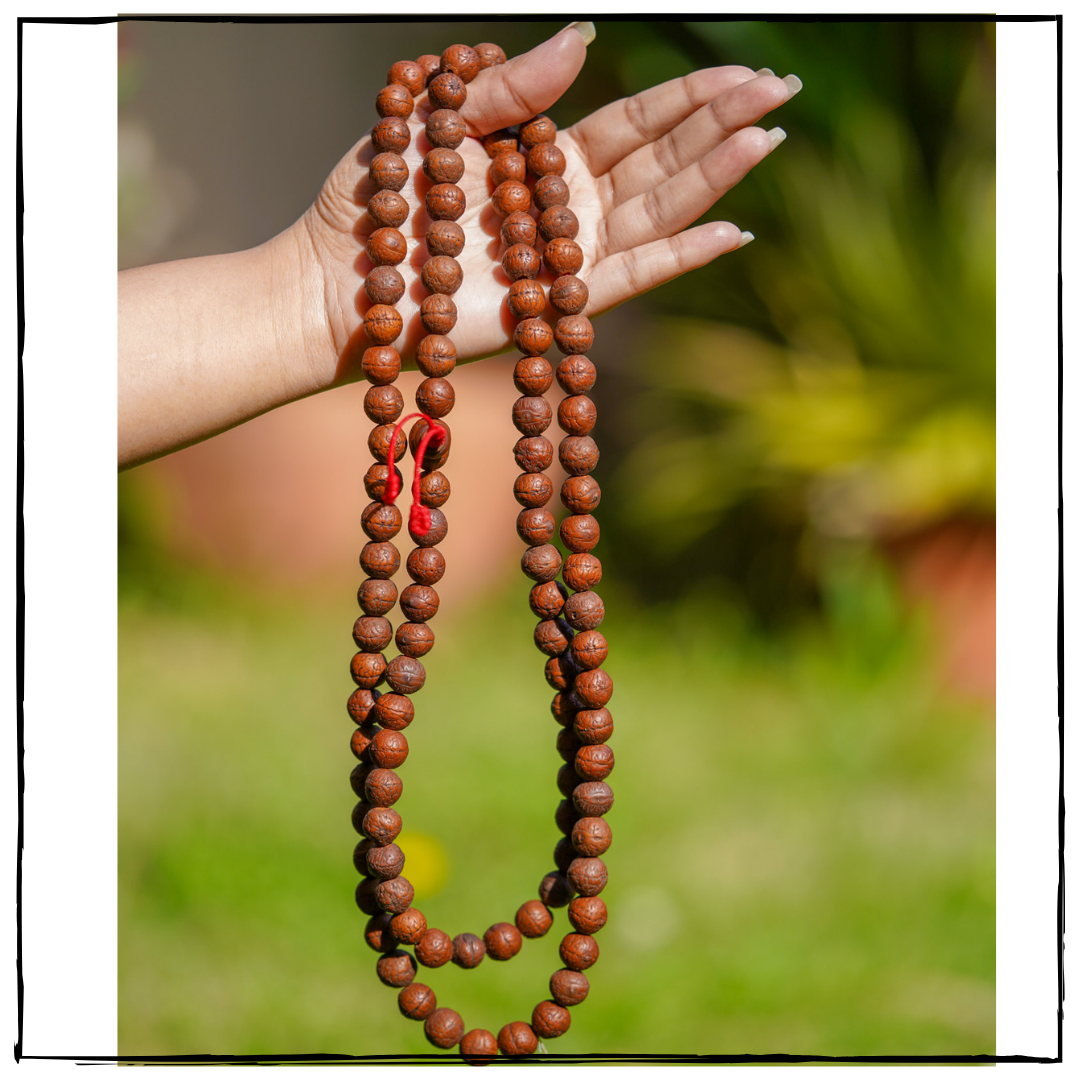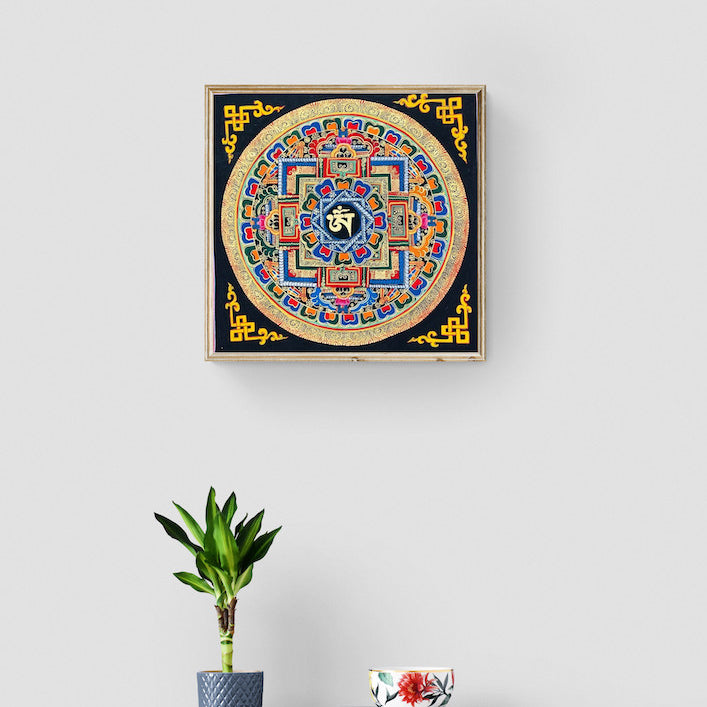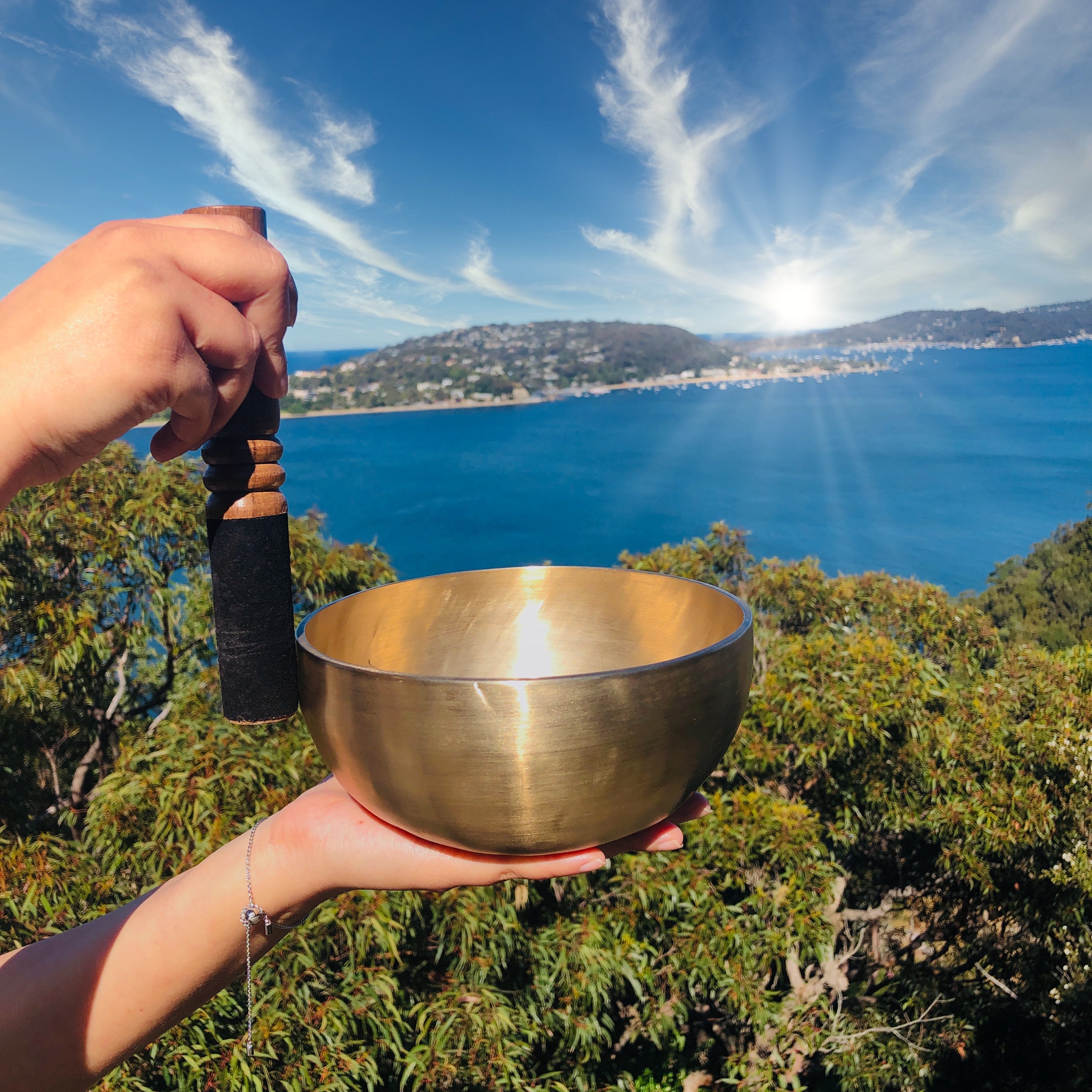White Tara Thangka Painting
Couldn't load pickup availability
Description
This hand-painted Tibetan Thangka features White Tara, a revered figure in Buddhism representing compassion, healing, and longevity. The meticulously crafted piece depicts her adorned with jewels, exuding a sense of serene elegance. Through her divine aura, White Tara offers solace and guidance to devoted followers.
Key features:
- Central Deity: White Tara is the primary subject of the painting, exuding a sense of peacefulness and elegance. She is presented sitting on a lotus throne, symbolizing her purity and attainment of enlightenment.
- Seven Eyes: White Tara is depicted as having seven eyes, located on her forehead, palms, and soles. These represent her vigilant awareness and all-encompassing presence.
- Divine Adornments: White Tara emits a radiant and graceful presence, draped in luxurious silk and adorned with jewels, exuding a heavenly aura and charm.
- Spiritual Significance: The White Tara Thangka serves as an effective means for meditation and spiritual practice, bestowing blessings of healing, protection, and longevity upon its followers.
- Meditation Aid: The White Tara Thangka Painting not only holds aesthetic significance, but it also acts as a central element for meditation, facilitating a connection between practitioners and the compassionate energy and healing blessings of the deity.
Product Specification:
- Hand Painted
- Size: 84 cm x 60 cm
- Base: Cotton Canvas
- Origination: Nepal

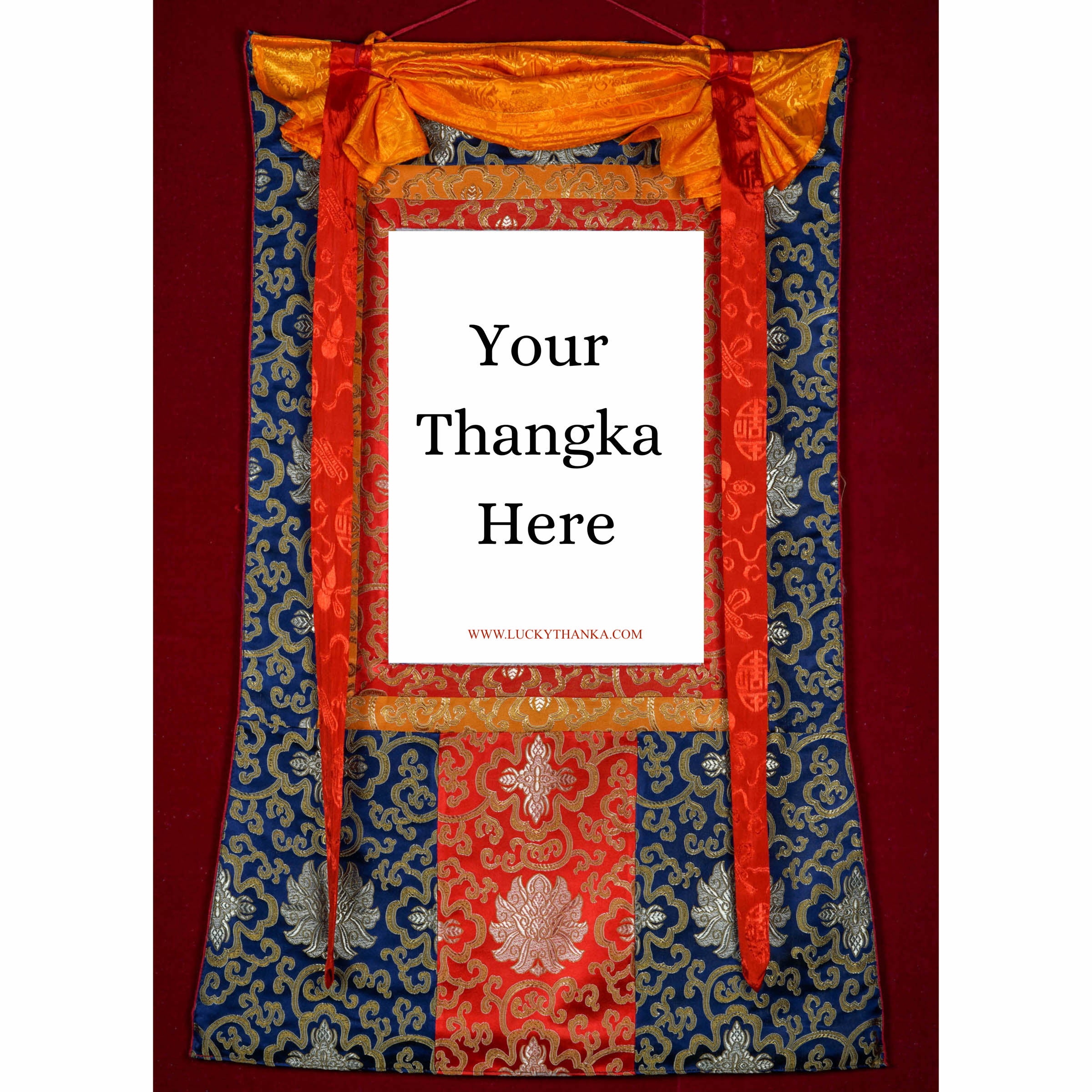
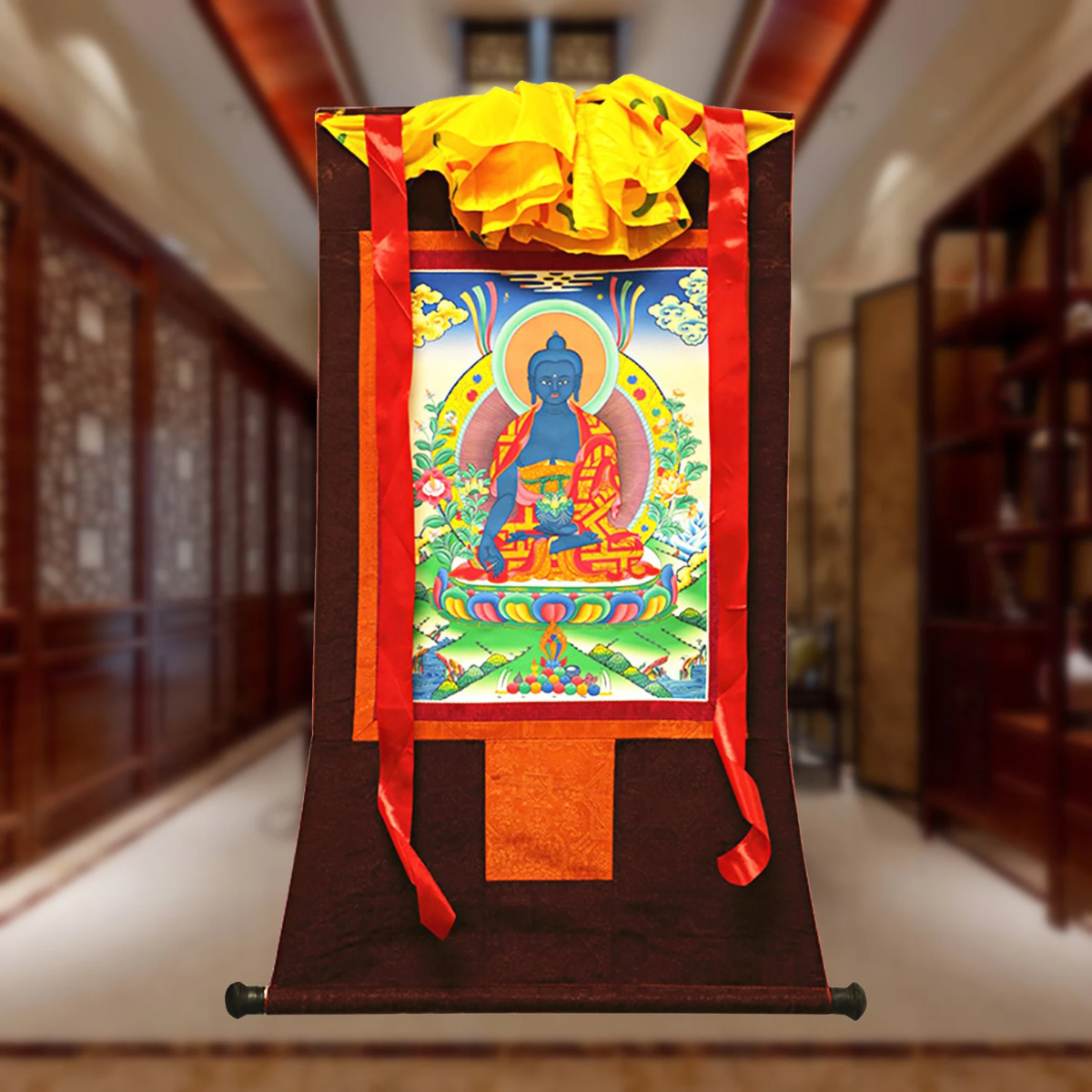
Hand Embroidery Brocade
Want to add a Brocade to your beautiful Thangka Painting? Traditional Style Brocade has been one of the most popular form of mounting as it has a greater religious merit.
Note: Make sure you have added the Thangka to your cart first.
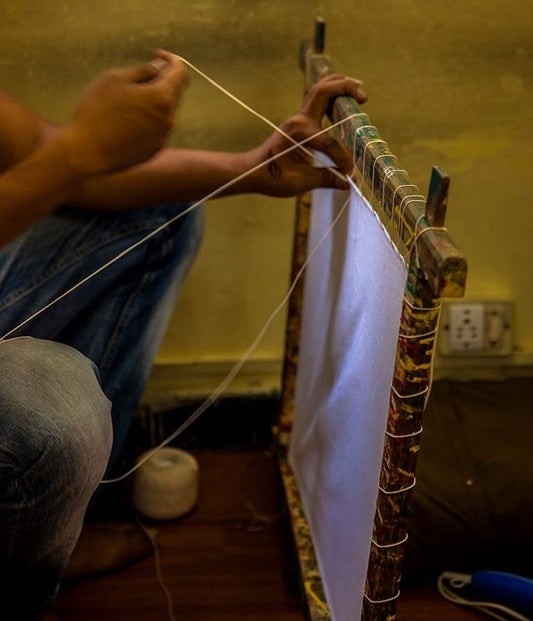
100% Cotton Canvas
Preparing the Cotton canvas before starting to paint a Thangka. This process includes washing, drying, stretching, sizing and everything needed to make a perfect base for the thangka to last for centuries.
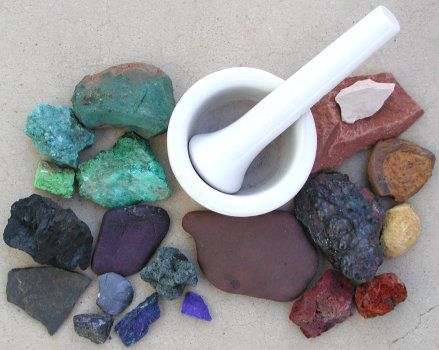
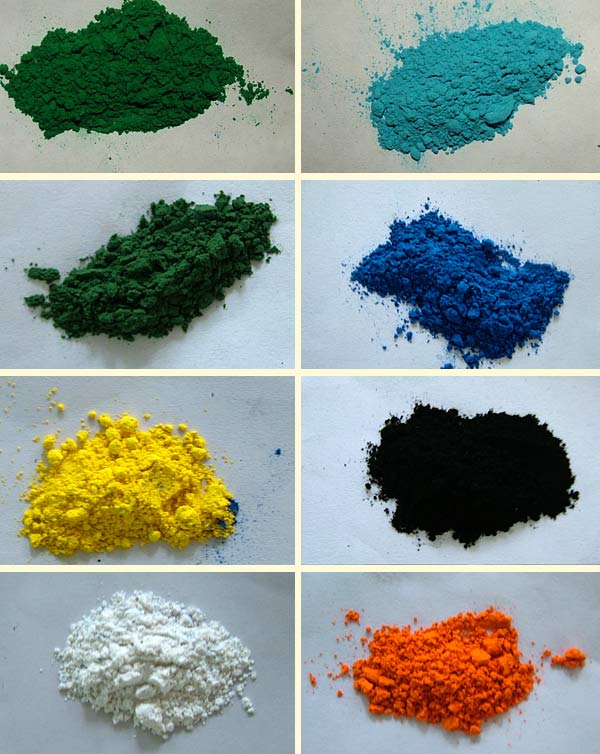
Natural Minerals
Thangka Paintings are painted using the natural minerals. These are firstly grind into the powder form and then used in the thangka as a paint.



